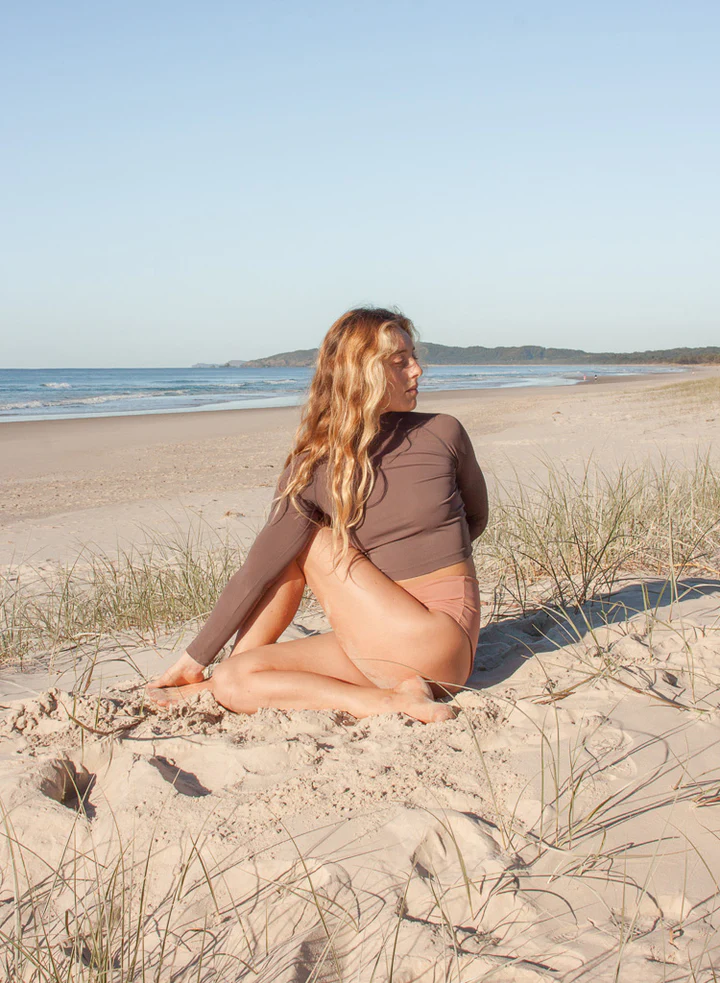How To Make A Beach Yoga Website Inspiring In The Best Beaches Of America
Beach yoga, a serene blend of fitness and nature, offers a unique experience that has been embraced by wellness enthusiasts around the world. For instructors who specialise in this tranquil practice, having a dedicated website is no longer a luxury but a necessity. In the digital age, a beach yoga websiteserves as the central hub for your business, allowing you to showcase your services, connect with clients, and build a community around your brand.
We highly recommend checking out the yoga website SYMC San Diego to learn interesting ideas about meditation techniquesfor the beach. The importance of having a dedicated website for beach yoga instructors is clearly highlighted on their platform. It serves as a comprehensive space to share their philosophy, class details, and the stunning settings where they teach. The website functions as a digital business card, providing accessibility 24/7 to a global audience. This ensures a broad reach, breaking geographical barriers and attracting potential students beyond local beachgoers. Explore the site to experience the essence of beach yoga and the unique offerings at SYMC San Diego.
Moreover, the benefits of reaching a wider audience through an online presence are manifold. It allows for increased visibility and credibility, which are crucial for growing your business. A well-designed website can attract new students, retain existing ones, and provide a platform for selling related products or services. It also offers a space for your students to interact with you and each other, fostering a sense of community and belonging, which is essential for any yoga practice.
In essence, a beach yoga website is not just a tool for marketing; it's a reflection of your brand and an extension of the peaceful and rejuvenating experience you offer on the sand. It's where your passion for yoga and love for the beach can come together to inspire and invite others into your world.
Designing Your Beach Yoga Website
Creating a beach yoga website that captures the essence of your classes and the serenity of the beach setting is crucial for attracting and retaining students. A well-designed website serves as your online sanctuary, inviting visitors to explore and join your yoga community. Here's how to design a stunning beach yoga website that resonates with your audience.
Choosing The Right Website Builder
The first step in designing your website is to select a website builderthat caters to the needs of yoga professionals. There are several platforms available that offer templates and tools specifically for fitness and wellness businesses. Look for features such as:
- Drag-and-drop functionality: This allows you to easily add, remove, and rearrange elements on your website without needing to know how to code.
- Customisable templates: Choose a builder that offers a range of templates that can be tailored to fit your brand and style.
- Mobile responsiveness: Ensure that the builder automatically optimises your site for mobile devices, as many users will access your site on their phones or tablets.
- SEO tools: These are essential for helping your website rank higher in search engine results, making it easier for potential students to find you.
Essential Content For Your Beach Yoga Website
Creating a beach yoga website is more than just a showcase of your services; it's a platform that reflects your passion, expertise, and the unique experience of practicing yoga by the sea. To ensure your website resonates with your audience and effectively communicates the essence of your beach yoga classes, there are several key elements you must include. Here's a breakdown of the essential content that will make your beach yoga website both informative and captivating.
Crafting An Engaging 'About Me' Page With Your Yoga Journey
Your Story:People connect with stories, and your 'About Me' page is the perfect place to share yours. Talk about your journey into yoga, what inspired you to focus on beach yoga, and any certifications or special training you have. This personal touch helps build trust and rapport with potential students.
Your Philosophy:Share your approach to yoga and how it intertwines with the beach setting. Whether it's about mindfulness, connecting with nature, or the physical benefits of practicing on sand, let your visitors know what makes your classes special.
Visuals:Include professional photos or a short video of you practicing or teaching yoga. This visual content can be powerful, allowing visitors to see you in action and imagine themselves joining your classes.
Listing Services, Class Schedules, And Pricing Transparently
Services Offered:Clearly outline the types of classesyou offer, such as group sessions, private lessons, or special workshops. If you offer online classes or retreats, make sure to include those as well.
Class Schedules:Provide a schedule that is easy to read and up-to-date. Use a table or calendar format so visitors can quickly find a class that fits their timetable.
Pricing:Be upfront about your pricing. List the cost of single classes, packages, or memberships, and explain what each option includes. If you offer discounts or special rates, such as for first-time students, make sure to highlight these.
Showcasing Testimonials And Student Transformations
Testimonials:Positive reviews from past and current students can be incredibly persuasive. Feature a few glowing testimonials that speak to the quality of your teaching and the benefits of beach yoga.
Before and After Stories:If you have students who have experienced significant transformations through your classes, ask if you can share their stories. This could be in the form of written testimonials, before-and-after photos, or video interviews.
Providing Clear Contact Information And Online Booking Options
Contact Details:Make it easy for visitors to get in touch with you. Include your email address, phone number, and any other relevant contact information. If you have a physical location for your classes, provide the address and a map.
Online Booking:Simplify the booking process by integrating an online booking system. This allows students to reserve their spot in a class without the need for back-and-forth communication. Ensure the system is straightforward and provides immediate confirmation of bookings.
By including these essential elements on your beach yoga website, you'll not only provide valuable information to your visitors but also create an inviting and professional online presence that truly represents your brand and the unique experience of beach yoga.
Best HTML Templates For A Yoga Website
Yogic Zen:Clean and calming design, easy access to the yoga class schedule, works well on different devices.
Soulful Asanas:Elegant fonts and calming colors, specific sections for different types of yoga, includes pictures of yoga poses.
Tranquil Vibes:Simple and calming design, easy booking for yoga classes, has a blog for wellness articles.
Harmony Yoga:Balanced and user-friendly layout, shows social media posts, can have a video on the homepage.
OmStudio:Modern and colorful design, allows subscription and payment for classes, includes a testimonial section.
NatureFlow Yoga:Nature-inspired theme, customizable class packages and prices, handles online class registrations and attendance.
Mindful Movements:Focuses on mindfulness with animations, includes a calendar for workshops and retreats, offers newsletter subscriptions for updates.
Beach Yoga Website - People Also Ask
How To Make A Yoga Website?
Choose a unique domain name relevant to your yoga business. Select a user-friendly website builder like Wixor WordPress. Pick a yoga-focused template for your website design. Customize your site with your branding elements, colors, and imagery. Include essential pages like Home, About Me, Services, Class Schedule, Pricing, Testimonials, and Contact. Ensure your website is mobile-responsive. Integrate online booking options and contact forms. Add professional photos of yoga poses, studio, and relevant visuals. Optimize your website for search engines. Publish your yoga website once satisfied with design and content.
How Do I Create An Online Yoga Program?
Define your specific niche or focus for the online yoga program. Plan the structure, including the number of sessions and content covered. Choose a platform like Teachable or Udemyfor hosting. Create engaging video content with clear audio and lighting. Set pricing and secure payment methods. Establish a community platform for participant interaction. Market your program through social media and other channels. Offer support and feedback during the program. Collect testimonials for marketing purposes. Evaluate participant feedback for program improvement.
How Profitable Is Owning A Yoga Studio?
Profitability varies based on the studio's location. A membership model can provide a steady income stream. Diverse offerings such as classes, workshops, and retreats attract a broader audience. Providing online classes or workshops can reach a wider audience. Retail sales of yoga-related products contribute to profitability. Effective marketing strategies, including social media and local advertising, drive business. Efficient operations, optimized schedules, and a well-run facility contribute to profitability. Building client loyalty through exceptional service enhances profitability. Continuous innovation, staying updated on trends, and adapting to client needs are crucial. Careful financial management, budgeting, and expense monitoring are essential for profitability.
Conclusion
For instructors specializing in this serene practice, having a dedicated website is now a necessity. Serving as a central hub in the digital age, a beach yoga website allows instructors to showcase services, connect with clients, and build a community around their brand.
The significance of a dedicated website cannot be overstated. It provides a platform to share philosophy, class details, and picturesque settings, attracting potential students. A website acts as a 24/7 accessible digital business card, breaking geographical barriers and reaching a wider audience beyond local beachgoers.
Reaching a broader audience through an online presence brings numerous benefits, including increased visibility and credibility crucial for business growth. A well-designed website attracts and retains students, offers a platform for selling products or services, and fosters a sense of community. A beach yoga website reflects the brand and extends the peaceful experience offered on the sand.



